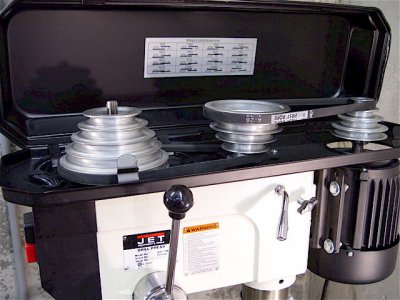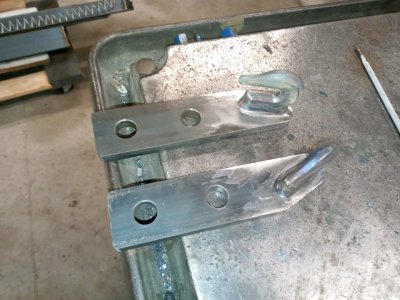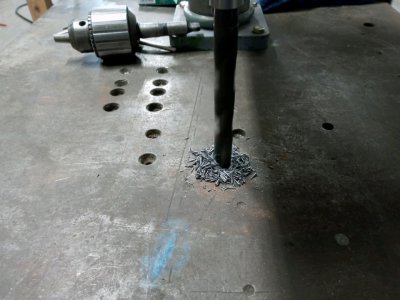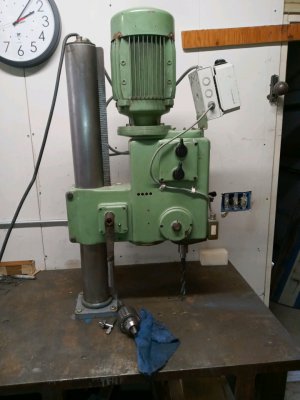- Joined
- Feb 13, 2017
- Messages
- 2,138
Figuring the speeds based on "pitch diameter" will get you close, but. . . One method is time consuming, but "brute force' simple. All done by hand, a "sharpie",(nearly universal shop tool) and the ability to count. Mark a spot on the motor pulley, and a corresponding mark on the shell of the belt cover, Do the same on the quill end. Rotate the drive pulley and record the number times, or turns, it takes to turn the quill pulley once. Record each pulley combination, redo if anything distracts you. This will get you the ratio of each pulley step. Then calculate speed based on the motor speed. If it is indeed an 1800 RPM motor, 4 pole, the running speed will be around 1750 RPM at no load.
If you have a need to calculate closer,(not likely) get an optical tachometer. A strobe light that counts a reflector on the quill. In any case, keep in mind that the machine will run a fuzz under indicated speed when loaded. The heavier the load, the slower it runs. By a very few RPM, in most cases you won't be able to measure the difference.
The "Cardinal" drive above is a commercially produced device that many people have shop built. It still is belt driven at the quill. My gizmo a few pages back gives a gear reduction at the quill. In either case, need for one is rare. Once you have a chart of belts vs. speeds, there are several methods of displaying it on the machine. Each more complicated than the last. Simplest is taping a copy nearby.
.
If you have a need to calculate closer,(not likely) get an optical tachometer. A strobe light that counts a reflector on the quill. In any case, keep in mind that the machine will run a fuzz under indicated speed when loaded. The heavier the load, the slower it runs. By a very few RPM, in most cases you won't be able to measure the difference.
The "Cardinal" drive above is a commercially produced device that many people have shop built. It still is belt driven at the quill. My gizmo a few pages back gives a gear reduction at the quill. In either case, need for one is rare. Once you have a chart of belts vs. speeds, there are several methods of displaying it on the machine. Each more complicated than the last. Simplest is taping a copy nearby.
.


 )!
)!


